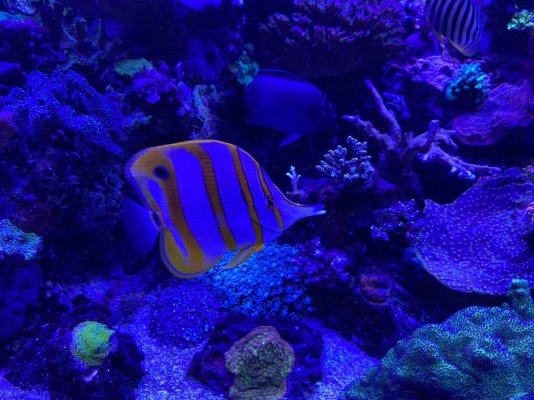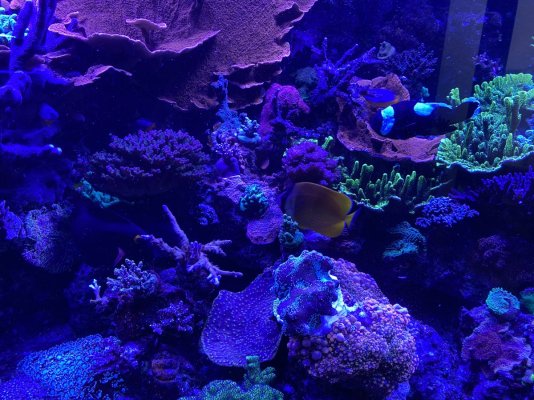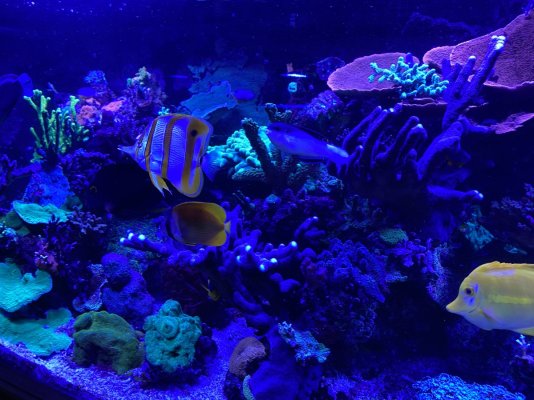About 50% lived past 1 year. Finding initially healthy specimens is extremely important. Unfortunately butterflies are prone to bullying by more aggressive fish (most other FOWLR fish), prone to ich, velvet, flukes, uronema, and secondary bacterial infections due to trauma from shipping. Unfortunately a LOT of butterflies arrive with damaged mouths and those are basically doomed.
I think part of the problem with butterflies is also due to their high metabolism. Few people feed them frequently enough, and often times they arrive so skinny/starved from shipping and sitting unfed throughout the whole collection and shipping process that they are doomed from the day they get to the home aquarium. If you get a healthy butterfly, try to feed it 3x daily or more, as these are fish that eat all day long in the wild. This is why most of my angels, tangs, butterflies (really almost all my reef fish) are fed 4-6x daily.
Butterflies are also still commonly collected with cyanide (one of the most commonly collected families of fish using this method), and those are also usually doomed. Buying fat butterflies that are at least interested in food, with known collection locale (to avoid areas that still commonly use cyanide), and without any obvious signs of trauma or disease, then quarantining for at least 30 days (both to eliminate risk of disease and to train onto prepared foods/acclimate to captive life), leads to the highest chances of success in my opinion.
I quarantine mine with plenty of rock to pick at, and lots of food options fed throughout the day (mysis, brine, clam on the half shell, nori, NLS pellets, rods, frozen fish eggs, homemade frozen blend, live Caulerpa, and masstick). I usually keep other fish that eat well but are not overly aggressive or pushy around food in with them to help train them as well (mollies and cardinals work really well for this). All my butterflies now go through 30 days of cupramine, 3 treatments of praziquantel, at least 7 days of metronidazole, and 5 days of ruby reef rally pro, along with a 5 minute freshwater bath before entering into quarantine.
I've not kept as many as you but I will say that seeing them in the wild as a diver they are constantly foraging. I feed dry hourly and frozen twice. And they still forage. Pretty fish btw.





















